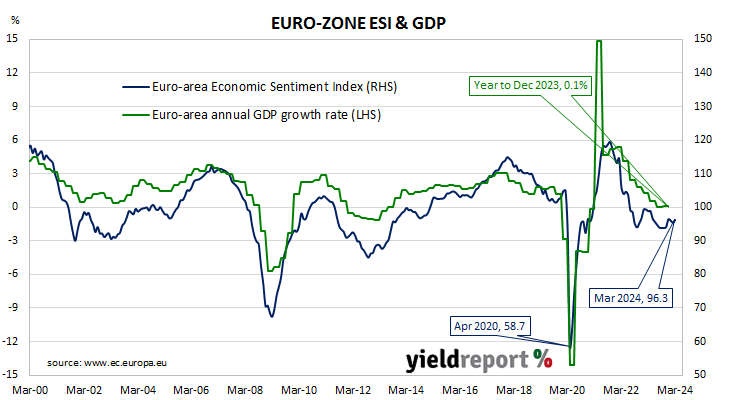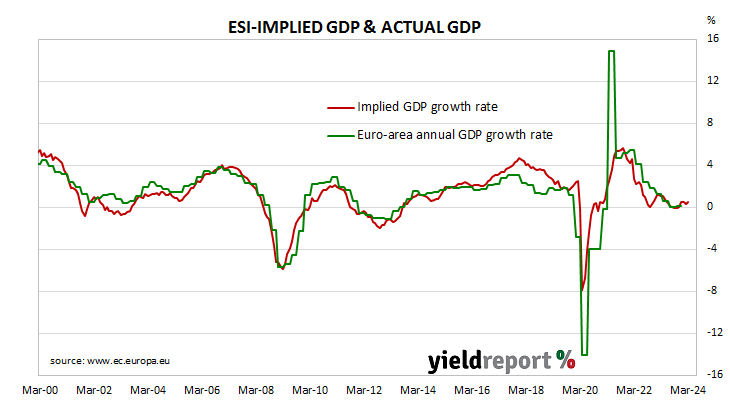Summary: Euro-zone composite sentiment indicator up modestly in March, in line with expectations; readings up in four of five sectors; up in three of four largest euro-zone economies; German, French 10-year yields fall; index implies annual GDP growth rate of 0.5%.
The European Commission’s Economic Sentiment Indicator (ESI) is a composite index comprising five differently weighted sectoral confidence indicators. It is heavily weighted towards confidence surveys from the business sector, with the consumer confidence sub-index only accounting for 20% of the ESI. However, it has a good relationship with euro-zone GDP growth rates, although not necessarily as a leading indicator.
According to the latest survey taken by the European Commission in March, confidence has improved on average across the various sectors of the euro-zone economy. The ESI posted a reading of 96.3, in line with expectations, but up modestly from February’s revised reading of 95.5. The average reading since 1985 is just under 100.
Long-term German and French 10-year bond yields both fell on the day. By the close of business, the German 10-year yield had shed 6bps to 2.29% while the French 10-year yield finished 4bps lower at 2.79%.
Confidence improved in four of the five sectors of the euro-zone economy. On a geographical basis, the ESI increased in three of four of the euro-zone’s largest economies.
End-of-quarter ESI readings and annual euro-zone GDP growth rates are highly correlated. This latest reading corresponds to a year-to-March GDP growth rate of 0.5%, up from February’s implied growth rate of 0.3%.



